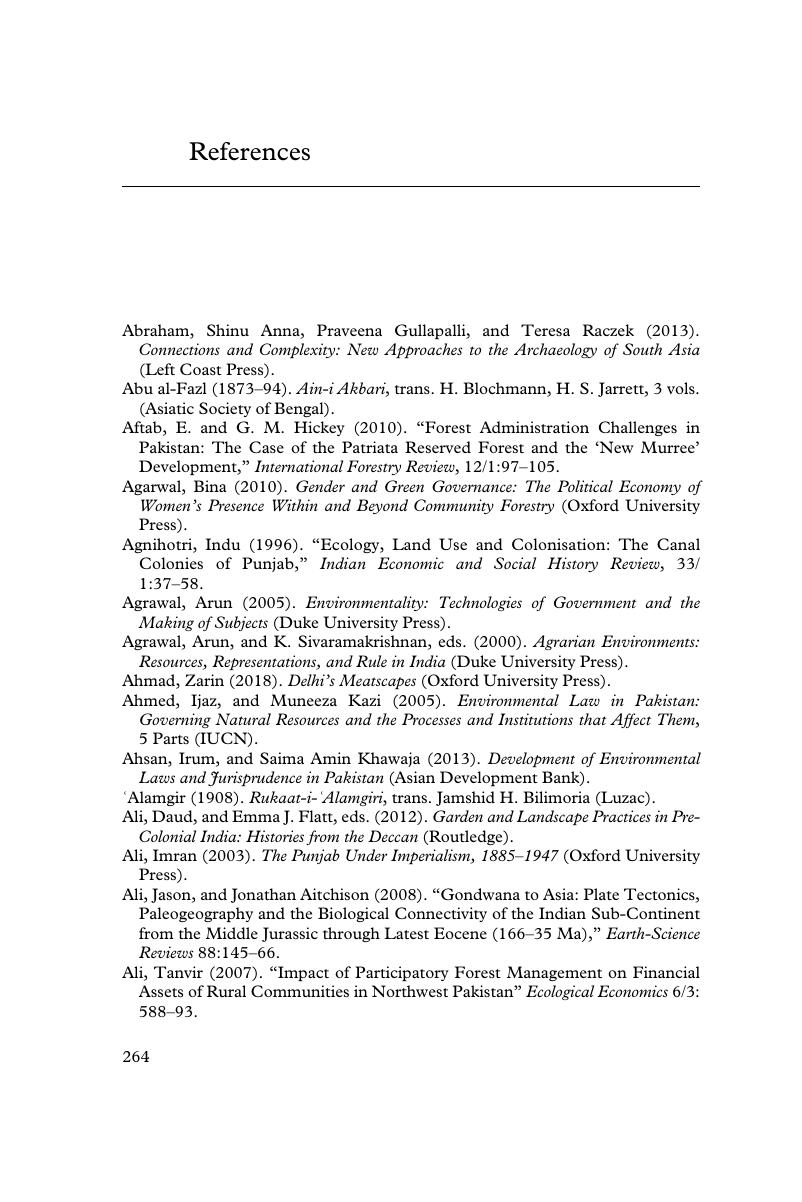Book contents
- An Environmental History of India
- New Approaches to Asian History
- An Environmental History of India
- Copyright page
- Contents
- Figures
- Maps
- Preface and Acknowledgments
- 1 Introduction
- 2 Locating and Shaping India’s Physical Environment and Living Populations
- 3 Indus and Vedic Relationships with Indian Environments (c. 3500 BCE – c. 600 BCE)
- 4 The Environment and Forest-Dweller, Late Vedic, Hindu, Jain, Buddhist, and Dravidian Cultures, Societies, and States (c. 600 BCE – c. 800 CE)
- 5 Insiders, Jewish, Christian, and Muslim Immigrants, and the Environment (c. 700 – c. 1600)
- 6 The Mughal Empire (1526–1707)
- 7 Mughal Imperial Fragmentation, Regional State Rise, Popular Environmental Movements, and Early British Colonial Policies and Institutions (c.1700–1857)
- 8 The British Raj, “Mahatma” Gandhi, and Other Anti-Colonial Movements (1857–1947)
- 9 West and East Pakistan and India following Independence (1947–71)
- 10 India, Pakistan, and Bangladesh from Stockholm to Rio (1971–92)
- 11 India, Pakistan, and Bangladesh into the Twenty-First Century
- 12 National, Subcontinental, and Global Issues in South Asia
- Bibliographical Essay
- References
- Index
- References
References
Published online by Cambridge University Press: 12 October 2018
- An Environmental History of India
- New Approaches to Asian History
- An Environmental History of India
- Copyright page
- Contents
- Figures
- Maps
- Preface and Acknowledgments
- 1 Introduction
- 2 Locating and Shaping India’s Physical Environment and Living Populations
- 3 Indus and Vedic Relationships with Indian Environments (c. 3500 BCE – c. 600 BCE)
- 4 The Environment and Forest-Dweller, Late Vedic, Hindu, Jain, Buddhist, and Dravidian Cultures, Societies, and States (c. 600 BCE – c. 800 CE)
- 5 Insiders, Jewish, Christian, and Muslim Immigrants, and the Environment (c. 700 – c. 1600)
- 6 The Mughal Empire (1526–1707)
- 7 Mughal Imperial Fragmentation, Regional State Rise, Popular Environmental Movements, and Early British Colonial Policies and Institutions (c.1700–1857)
- 8 The British Raj, “Mahatma” Gandhi, and Other Anti-Colonial Movements (1857–1947)
- 9 West and East Pakistan and India following Independence (1947–71)
- 10 India, Pakistan, and Bangladesh from Stockholm to Rio (1971–92)
- 11 India, Pakistan, and Bangladesh into the Twenty-First Century
- 12 National, Subcontinental, and Global Issues in South Asia
- Bibliographical Essay
- References
- Index
- References
Summary

- Type
- Chapter
- Information
- An Environmental History of IndiaFrom Earliest Times to the Twenty-First Century, pp. 264 - 282Publisher: Cambridge University PressPrint publication year: 2018

